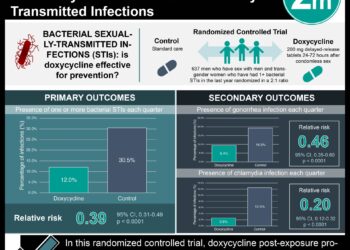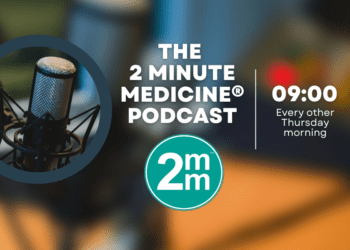Testing for sexually transmitted infections is infrequent among high school students in the United States
1. In a 2019 national survey of 2501 high school students across the United States, only 20.4% of those who were sexually active in the past 3 months were tested for sexually transmitted infections in the past year.
2. Those more likely to have been tested included females, older females, and those who endorsed specific sexual behaviors.
Evidence Rating Level: 3 (Average)
Study Rundown: Sexually transmitted infections (STIs) are common in adolescents and young adults and can lead to long-term complications, including chronic infection and infertility. Annual STI testing, specifically for chlamydial and gonococcal infections, is currently recommended for sexually active adolescents and young adults. This study reported the prevalence of STI testing in roughly 2,500 sexually active high school students from a national sample of students in the United States, and described associations of testing with behavioral and demographic data.. Overall, 20.4% of students were tested for STIs in the past year. Females (26%) were more likely than males (14%) to be tested. Prevalence of testing for males did not differ depending on demographics, however for females older age was associated with higher prevalence of STI testing. Certain sexual behaviors were associated with higher prevalence of testing in males and females, including no condom use at last sexual encounter for both sexes. Prevalence of STI testing for individuals who may have been tested in the past 12 months, but who were not sexually active in the past 3 months, was not investigated. This study indicates STI testing rates are suboptimal in sexually active high school students and screening implementation should be a priority for health care providers, especially for young men, who may be the least likely to seek STI testing.
Click to read the study in PEDIATRICS
Relevant Reading: Reaching youth with sexually transmitted disease testing: Building on successes, challenges, and lessons learned from local get yourself tested campaigns
In-Depth [survey]: This study included data from the 2019 National Youth Risk Behavior Survey, which included a survey of public and private high school students across the United States. Respondents were asked if they were tested for STIs (other than HIV) in the past 12 months. Behavioral questions included sexual intercourse at <13 years of age, ≥4 lifetime sexual partners, ≥2 sexual partners in the past 3 months, alcohol or drug use before last sexual intercourse, and no condom use during last sexual intercourse. Demographic information included age, sex, race/ethnicity, sexual identity, and sex of lifetime sexual contacts. In total, 2501 students who were sexually active in the past 3 months, who answered the initial STI question, were included. Approximately 20% of sexually active students were tested for STIs, with a higher prevalence in females. In males, all sexual behavior indicators except for no condom use at last sexual encounter were associated with increased testing. In females, no condom use at last sexual encounter was the only behavior associated with increased STI testing, after adjusting for demographic data.
Image: PD
©2022 2 Minute Medicine, Inc. All rights reserved. No works may be reproduced without expressed written consent from 2 Minute Medicine, Inc. Inquire about licensing here. No article should be construed as medical advice and is not intended as such by the authors or by 2 Minute Medicine, Inc.









